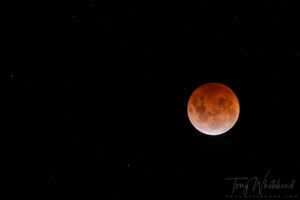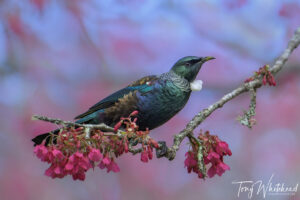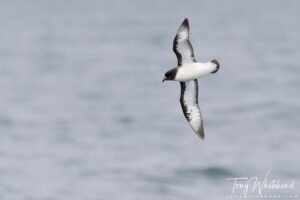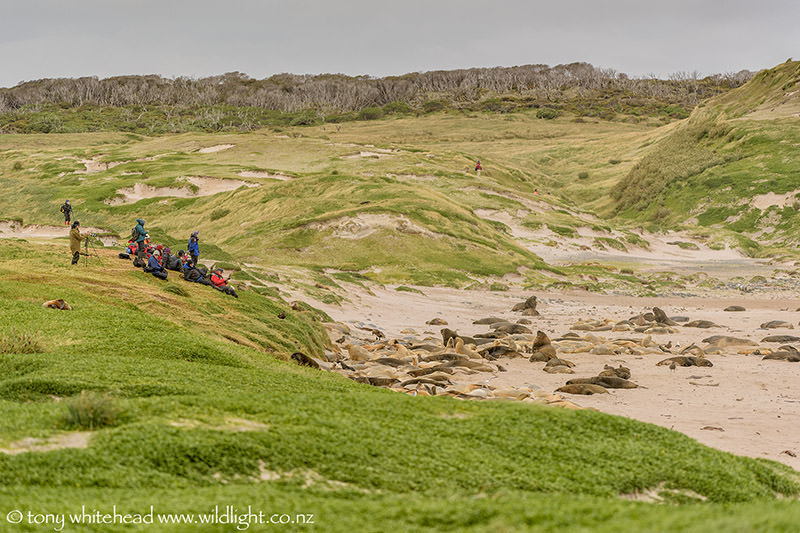
We spent the rest of our afternoon on Enderby Island watching the New Zealand Sea Lions in the breeding colony at Sandy Bay. It was a hive of endless activity with little dramas playing out the whole time. The dominant beachmaster males control a group of breeding females and are continually fighting between themselves to maintain their territory. A lot of their encounters seem to be posturing more than contact but there are still many episodes of flying fur and blood stained necks. The new born pups are unbearably sweet with their soft fur, dopey puppy faces and bleating. The large males seem to pay them no heed in their testosterone fueled haze and the little ones seem in continual danger of being crushed. The Brown Skuas are in constant attendance for whatever they can find and were especially focussed on a stillborn pup that was still being defended by it’s mother.
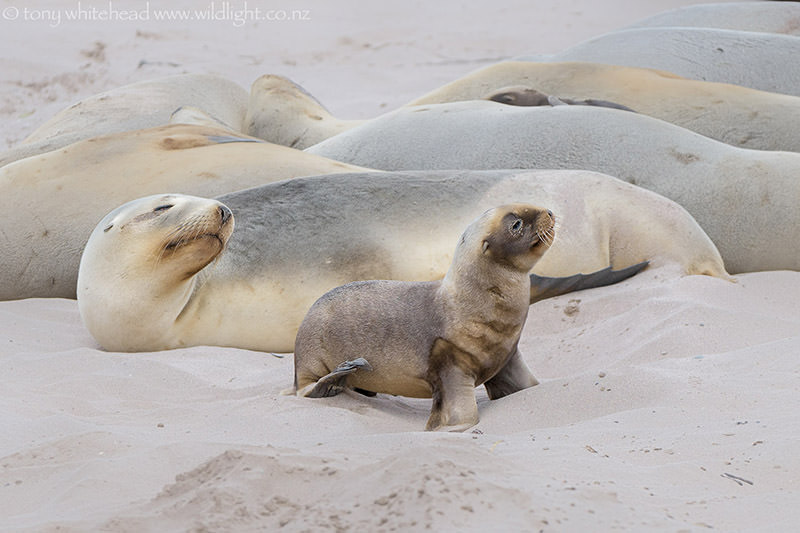
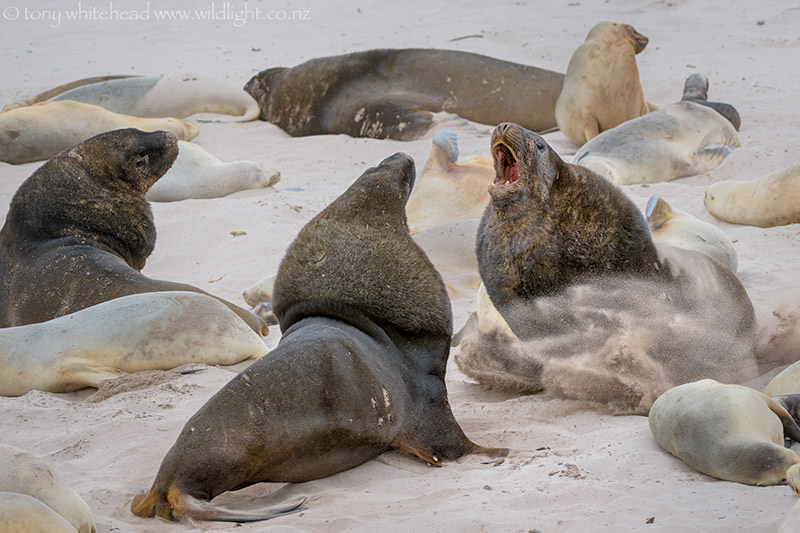
New Zealand Sea Lions were classified as vulnerable on the IUCN Red List until 2015 when they were reclassified as endangered, placing them 1 step below critically endangered and only 2 steps below extinct in the wild. They are at significant risk, having a very restricted distribution and with all their breeding activity essentially centred on Enderby Island and a smaller colony on Campbell Island. A population viability analysis of the Auckland Island population predicted a 98% probability of extinction of this population within 5 generations which is an alarming thought. Their numbers were severely impacted during the days of sealing and never fully recovered. In recent times the numbers are continuing to drop due to a number of factors including fishing, climate change with movement of prey increasing foraging distance, and disease.
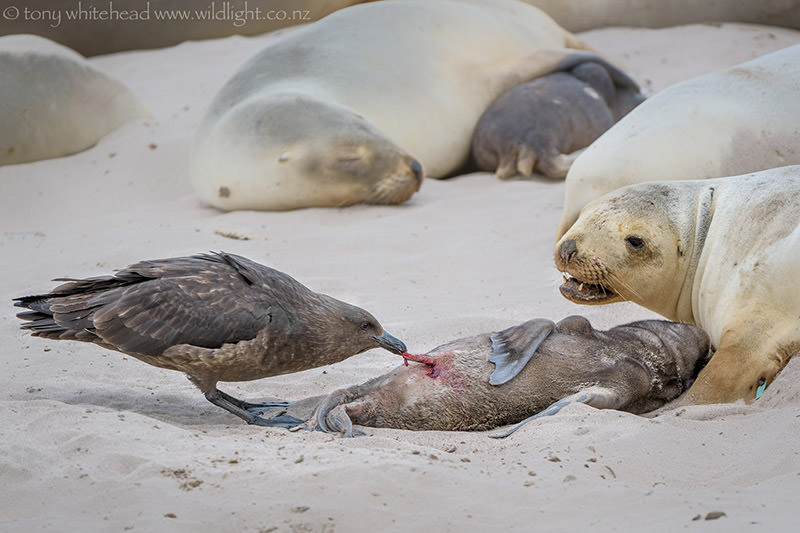
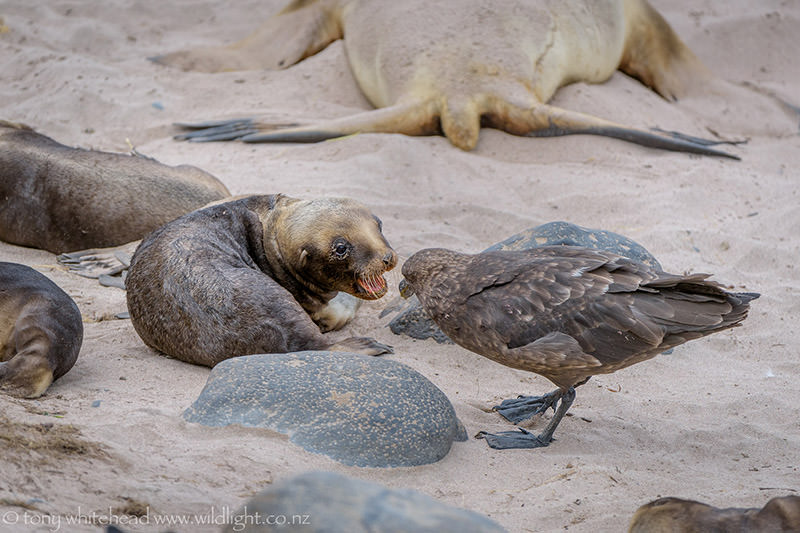
Like other Otariidae (Eared or fur seals) they are sexually dimorphic with the males being up to 1.5 times longer and 3-4 times heavier than the females. The females are beautifully sleek and golden with the males being a dark brown with a rough mane and coarse features. Looking at the beautiful little pups it seems that testosterone has a lot to answer for! Sexual maturity is reached at 5 years for males and 3-4 years for females with 65% of females achieving reproductive success each year. Pup mortality at 1 year for the Auckland Island population was 30-55% with figures even worse in the more rugged environment of Campbell Island where the 6 week mortality was 55%. Lifespan for males is at least 23 years and females 26 years. Oestrus occurs 7-10 days after the females give birth so the colony is a chaos of birthing, mating and nurturing newborn pups. After mating the females embark on short foraging trips of 2-3 days before returning to attend and feed pups for a day or 2. At this stage they are likely carrying an embryo for the following year so if lost at sea potentially 3 animals are lost as the pup left on the beach will starve too. This makes the by-catch of predominantly adult females in trawl nets especially concerning. The peak squid fishing season co-incides with the breeding season when the Sea Lions are most in need of food for breeding, so may contribute to them needing to forage further and with less success due to competition from the fishery. Mitigating mechanisms in nets involving a steel grill and escape hatch have been in place since the 1990s with a reduction in recorded Sea Lion deaths in nets but not an increase in population numbers. Pup mortality relates to trauma (35%), bacterial infection (24%), hookworm infection (13%), starvation (13%) and stillbirth (4%). Adult males contribute to this via trampling during territorial battles and occasional episodes of cannibalism.
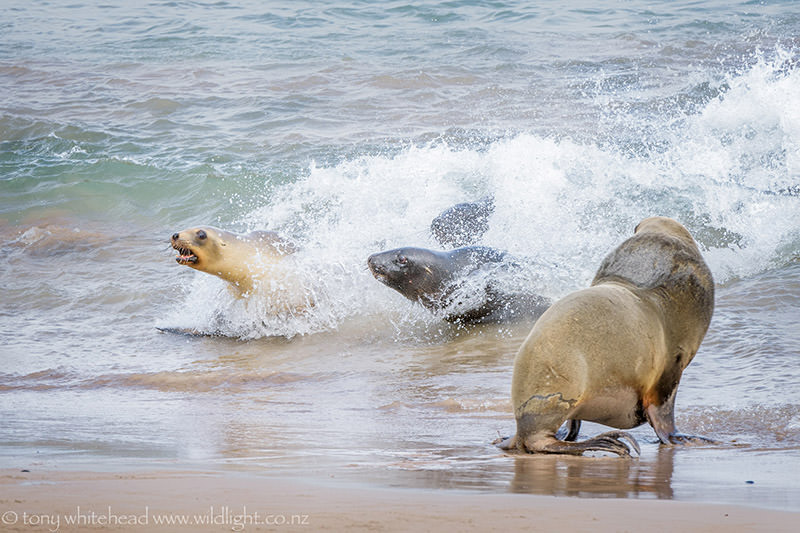
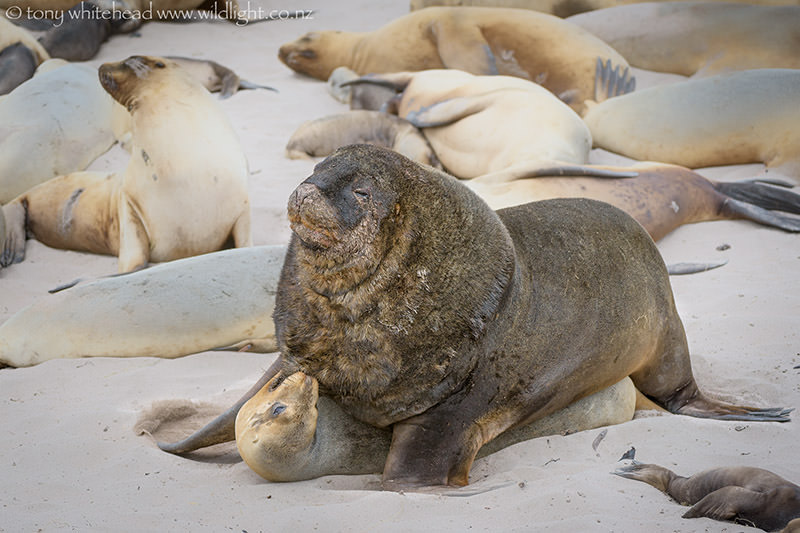
In a land with native land mammals restricted to 2 bats, our marine mammals assume a special significance and impose a special responsibility on us. Being restricted largely to our Subantarctic Islands, most New Zealanders haven’t had the opportunity to see and appreciate them first hand so they remain a concept rather than a reality and their plight remains a step further away from from our daily consciousness. We rely on the researchers to identify the issues of importance and on the government not to risk our universal heritage for short term monetary gains of a few. The article in the March/April 2016 New Zealand Geographic by Bill Morris with photos by Richie Robinson provides a good insight into the issues.
